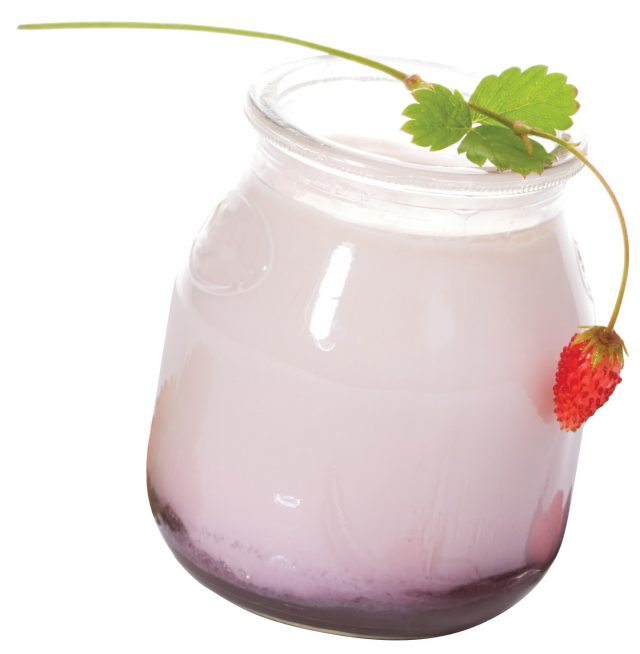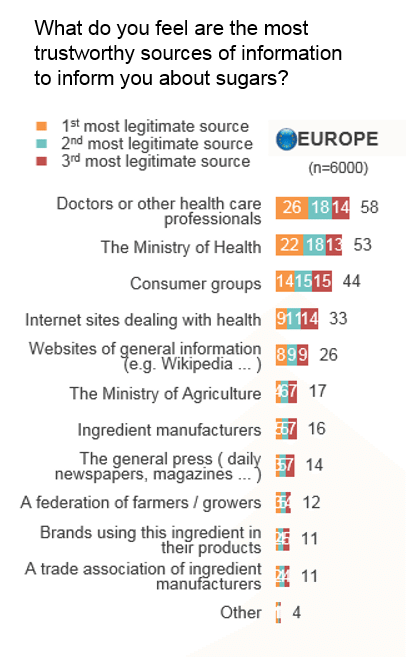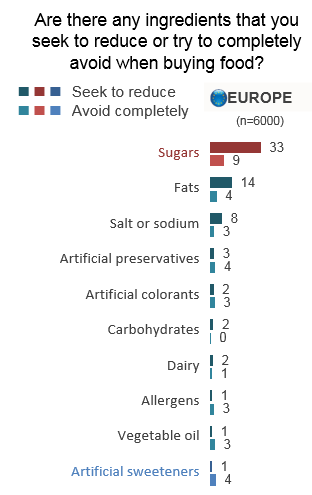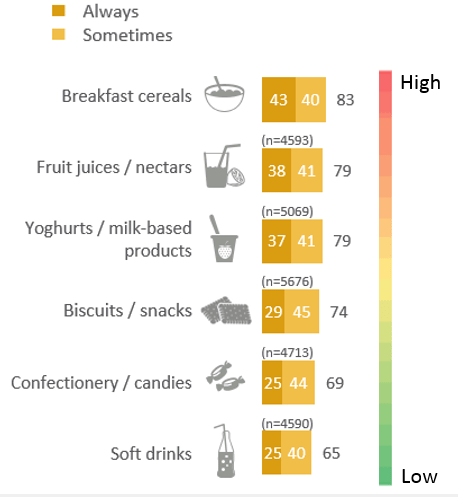Consumers have limited awareness of different types of sugars, according to a study Cargill has commissioned the IPSOS study institute to conduct.
When asked to identify different types of sugars and sweeteners up to 1/3 of over 1,000 consumers in Europe were unable to spontaneously recall any type of sugar or sweetener, with Poland having the lowest awareness.
Only 1% of consumers’ specifically named glucose-fructose syrup as type of sugar.
Overall results show that if consumers were prompted, honey, cane, white sugar, fructose and stevia were in the top five most recognized sugars and sweeteners, but when the data was reviewed on a country by country basis some variance was noted.
The survey demonstrates that among consumers glucose-fructose syrups are still relatively unknown, with some consumers indicating they would be interested in learning more about the origins of glucose-fructose syrups (corn and wheat) and their nutritional value.
The study results indicate that consumers consider health care professionals and government ministries are the most trustworthy sources of health information, while ingredient manufacturers, and the brands using the ingredients, are perceived to be less credible.
The survey results show that sugars are the group of ingredients most consumers claim to be reducing in their diet.
Within this group glucose-fructose syrups are not avoided more than regular white sugar.
The IPSOS study highlights some general perceptions of sugars and illustrates the attitudes consumers have towards sugars in their diet.
A third of all consumers spontaneously mentioned they actively reduce the amount of sugars in their diet, when compared to other ingredients such as fat and salt.
When it comes to complete avoidance, sugars are mentioned less often.
However, it is still the ingredient most consumers indicate they are seeking to reduce when buying food and beverages.
Although 52% of the consumers interviewed perceived white sugar to be a natural product, stevia received a score of 47%.
Some 80% of consumers indicated white sugar is the ingredient they most avoid, mainly because of the link to obesity (71% of the consumers surveyed mentioned sugars are fattening).
Aspartame is the second most avoided sweetener after white sugar.
When compared to sugars as a category, the reasons given for the avoidance of glucose-fructose syrups is often related to consumers perception, and lack of information, about its nutritional value and origins.
This perception is comparable across different European countries, with some slight variation in the UK, where overall stevia is seen to have a positive image in terms of its naturalness, healthiness and reduced calorie content.
Purchasing behavior
The outcome of the survey suggests that purchasing decisions are driven by the quantity of sugars in a product, rather than the types of sugars, and indicated equal purchasing intent for beverages made with either sugars or glucose-fructose syrups (consumers do not avoid glucose-fructose syrups more than they avoid regular sugar in soft drinks).
However purchasing intentions decrease when both sugar and glucose-fructose syrups are combined on the label, suggesting there is a perception amongst consumers that there is a higher sugar content, when in fact the total quantity of sugars remains unchanged.
When consumers were asked to give a reason why they would not purchase a full caloric beverage, over half of the respondents indicated that sugars content was the main barrier.
This was a consistent response for both soft drinks and fruit juices, regardless of the proportion of sugar/glucose-fructose syrups they contained.
The study is also a great source for information on consumer purchasing and consumption habits.
Taste is a primary deciding factor for consumers when buying a product, with the results indicating that price, promotional offers, pack size and branding are also important choice criteria.
A large majority of consumers also pay attention to product ingredients, albeit on a more secondary level, with the level of attention to ingredients being heavily dependent on the type of food/beverage.
Specific focus on ingredients depends on the type of products being purchased: indulgent products versus products consumed to maintain a healthy diet.
Consumers tend to use different selection criteria for purchasing decisions, and are more discerning when it comes to buying daily food. (e.g. focus is notably lower for soft drinks compared to other essential foods).
The list of ingredients was shown to be of equal relevance and importance across the different countries surveyed.
However the data showed that Spanish and Polish consumers were more likely to read the list of ingredient regularly, while Dutch consumers were shown to do so less frequently.














